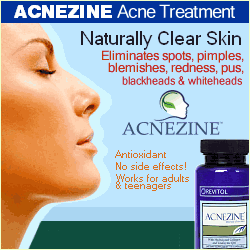Chemical Peel Help Aging Skin
Will A Chemical Peel Help Aging Skin?
When your skin becomes wrinkled,
uneven, scarred or spotted a chemical peel may be your best option for
smoother, younger-looking skin. This
procedure uses a chemical solution to smooth the skin texture by removing the
damaged outer layers.
A chemical peel is also called
chemexfoliation or derma peeling. It is
one of the least invasive procedures for improving the appearance of your
skin. Chemical peels are used on the
face, neck and hands to improve the following:
- Acne and acne scars
- Age spots
- Fine lines and wrinkles
- Scars
- Rough skin
- Uneven skin pigmentation
- Freckles
- Sun-damaged skin
A chemical peel will not work
well on sagging skin, bulges and deep wrinkles.
For this type of skin condition, other cosmetic procedures may be
required such as a facelift, collagen fillers, or eyelid lift. A dermatologist can help determine the best
type of treatment for each individual case.
Types of Chemical Peels
Chemical peel is becoming more
popular because it is a simple procedure that is affordable and gives quick and
good results. There are different types
of chemical peels based on the patient’s skin condition and expected results.
Light or superficial chemical peels are performed using solutions
of glycolic acid, lactic acid, or salicylic acid to remove fine wrinkles and
smooth out rough skin.
Medium chemical peels use trichloroacetic acid to remove wrinkles,
superficial blemishes and pigmentation problems. This treatment can be used on the face, neck
and body. It is recommended for
darker-skinned patients.
Deep chemical peel or phenol peel is performed only once, unlike
the other types of chemical peels which can be repeated several times. A deep
chemical peel can remove coarse wrinkles and pre-cancerous growths.
Chemical Peels - How Are They Performed?
A chemical peel can be performed
in a doctor’s office. The skin is
thoroughly cleansed to remove excess oil.
The eyes and hair are protected.
A chemical solution containing glycolic acid, salicylic acid, alpha
hydroxy acids, trichloroacetic acid, lactic acid, or carbolic acid is applied
to small areas of the skin. The result
is a controlled wound which enables new skin to appear.
Depending upon the type of
chemical peel used, patients may experience a reaction similar to sunburn. Medium and deep chemical peels may result in
swelling and blisters that break, crust, turn brown and peel off in one to two
weeks.
You must avoid exposure to the
sun after a chemical peel to protect the new skin. Bandages may be placed over the treated skin
after the procedure. Proper follow-up
care is important to prevent the development of abnormal skin color.
Before going for a chemical peel
make sure the results you expect can be achieved by the treatment. Your dermatologist will be able to give you
the advice and treatment you need.












0 comments:
Post a Comment